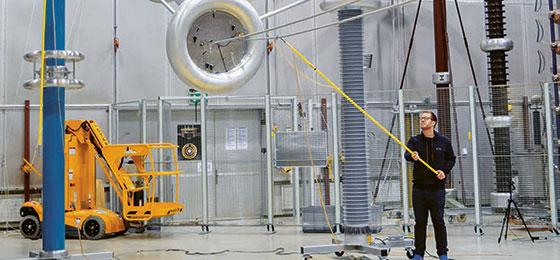Hybrid overhead lines: Transporting more power, not more power lines

Hybrid lines increase the capacity of the power grid. Two projects of NRP 70 and 71 have examined how the new technology can be optimised and is accepted by the population.
Social opposition to new high-voltage lines is delaying modernisation of the power grid. Two projects of the National Research Programmes “Energy Turnaround” and “Managing Energy Consumption” have determined the optimum design of hybrid overhead lines needed to increase the capacity of the power transmission grid and, at the same time, win popular acceptance for the new technology.
Unlike conventional power lines, hybrid overhead lines combine alternating current (AC) and direct current (DC) systems on the same tower instead of two AC systems. This increases transmission capacity even though the height and width of the lines remain identical, and it avoids new construction and encroachment on the landscape. However, interference caused by the weather, contamination of the AC and DC conductor cables or the distance between cables can lead to bothersome noise and electric fields.
